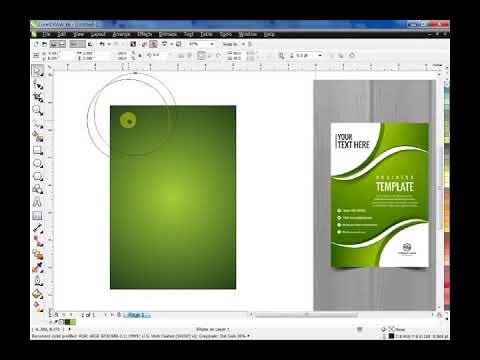
Introduction:
In the intricate world of graphic design, organization is a linchpin for efficiency and creativity. CorelDRAW, a leading vector graphics editor, offers designers the ability to add aliases to locations containing templates, providing a powerful tool for streamlined access and improved workflow. In this exhaustive guide, we will explore the nuances of adding aliases in CorelDRAW, understand the importance of location management, and delve into advanced techniques for optimal template accessibility.
Section 1: Understanding the Importance of Aliases
1.1 Defining Aliases in CorelDRAW: Aliases, in the context of CorelDRAW, are virtual references or shortcuts to specific locations containing templates. Explore how aliases serve as convenient links, allowing designers to access template folders efficiently.
1.2 Streamlining Workflow with Aliases: Delve into the significance of streamlining workflows through the use of aliases. By creating virtual shortcuts to template locations, designers can save time navigating through complex directory structures and access templates with a simple click.
Section 2: Navigating CorelDRAW’s Template Locations
2.1 Default Template Folder: Understand the default location where CorelDRAW stores its templates. This is typically within the Templates folder in the CorelDRAW program files. Familiarize yourself with this default path for template management.
2.2 Custom Template Locations: Recognize the flexibility CorelDRAW offers by allowing designers to choose custom locations for template storage. Whether on local drives, external storage, or network servers, templates can be stored based on individual preferences.
Section 3: Accessing the Aliases Manager in CorelDRAW
3.1 Locating the Aliases Manager: Navigate through CorelDRAW’s interface to find the Aliases Manager. Depending on your version, this may be accessible through the Tools menu or a dedicated manager within the welcome screen.
3.2 Understanding the Aliases Manager Interface: Familiarize yourself with the interface of the Aliases Manager. Explore options for adding, modifying, and removing aliases, and understand how to navigate within the manager for efficient location management.
Section 4: Adding Aliases to Template Locations
4.1 Selecting the Alias Type: Begin the process by selecting the type of alias you want to create. CorelDRAW typically allows for directory aliases, allowing you to link to specific folders where templates are stored.
4.2 Browsing for the Template Location: Use the browsing functionality within the Aliases Manager to locate and select the folder containing your templates. This establishes the virtual link or alias to that specific location.
4.3 Naming the Alias: Assign a clear and descriptive name to the alias, ensuring that it reflects the content or purpose of the linked template location. A well-chosen alias name enhances the user experience and facilitates easy identification.
Section 5: Managing and Modifying Aliases
5.1 Editing Alias Properties: Explore the options within the Aliases Manager for editing alias properties. Understand how to modify the alias name, update the linked location, or adjust other settings based on changing requirements.
5.2 Removing Unnecessary Aliases: Periodically review your list of aliases and remove any that are no longer needed. This practice helps maintain a clean and efficient aliases manager, preventing clutter and confusion.
Section 6: Advanced Techniques for Alias Management
6.1 Organizing Aliases with Groups: Take advantage of advanced features, such as creating groups for your aliases. Grouping allows you to categorize aliases based on themes, projects, or other criteria, enhancing the organization of your template locations.
6.2 Alias Security and Permissions: Explore considerations for alias security and permissions, especially in collaborative or networked environments. Understand how setting appropriate access levels ensures that team members can efficiently utilize the linked template locations.
Section 7: Troubleshooting and Tips
7.1 Addressing Alias Path Changes: Learn how to handle situations where the path to your template location changes. Understand the steps to update aliases to reflect the new path and avoid potential issues with template access.
7.2 Backing Up Alias Configurations: Consider implementing backup strategies for your alias configurations. This ensures that, in the event of system changes or upgrades, you can quickly restore your aliases to maintain a seamless workflow.
Conclusion:
In conclusion, adding aliases to locations with templates in CorelDRAW is a strategic move towards optimizing your design workflow. Whether you are a seasoned professional seeking efficiency or a newcomer exploring the capabilities of CorelDRAW, this comprehensive guide equips you with the knowledge and techniques needed to master template location management. By understanding the importance of aliases, navigating CorelDRAW’s template locations, accessing the Aliases Manager, adding and managing aliases, and exploring advanced techniques, designers can elevate their organization skills and unlock the full potential of CorelDRAW for a more efficient and streamlined design process.